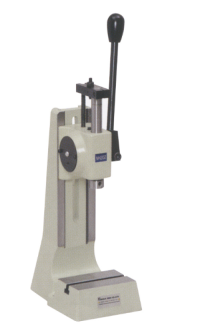Maintenance Tips to Keep Your Hydro Pneumatic Press in Top Condition
- changdeliequip
- Nov 13, 2024
- 4 min read

Maintaining a hydro-pneumatic press is essential for running smoothly and prolonging its lifespan. Regular maintenance ensures that your equipment stays in peak condition and helps reduce downtime, improve safety, and maintain consistent performance. Also, choosing the right hydro-pneumatic press exporter can make a significant difference in the performance and longevity of your equipment. In this guide, we’ll cover a range of tips to keep your hydro pneumatic press in optimal working order, from routine inspections to preventive measures that every operator should follow.
Understand the Importance of Regular Maintenance
Routine maintenance is the backbone of any well-functioning hydro-pneumatic press. When machines operate under intense conditions, wear and tear are inevitable. Proper maintenance prevents unexpected failures, which can be costly in repairs and lost production time. By adhering to a consistent maintenance schedule, you help to protect your investment and keep the press running efficiently.
Conduct Daily Visual Inspections
One of the simplest yet most effective maintenance step is conducting a daily visual inspection. Before each use, take a few minutes to examine critical areas of the press. Check for any visible signs of wear, leaks, or loose parts. Look at the hoses, fittings, and connections to ensure everything is secure and cracks-free. Identifying minor issues early on can prevent them from becoming more extensive, more expensive problems down the line.
Monitor Hydraulic Fluid Levels
Hydraulic fluid plays a crucial role in the operation of a hydro-pneumatic press. Regularly monitor the fluid levels to ensure they are correct, as low fluid levels can lead to poor performance and even damage the pump. Follow the manufacturer’s guidelines on which fluid to use and maintain at the recommended level. Also, make sure to replace hydraulic fluid periodically, as it can degrade over time, causing efficiency to decrease and leading to potential malfunctions.
Inspect for Hydraulic Leaks
Hydraulic leaks are common in presses, especially as they age. Regularly check for any signs of leaks around seals, valves, and hoses. A small leak may not seem significant, but it can quickly escalate. In addition to affecting performance, leaks can cause safety hazards and contaminate the workspace. Replacing worn or damaged seals and fixing leaks promptly can save you from more significant problems in the future.
Keep the Press Clean
Dirt and debris can accumulate on the press over time, affecting its operation and leading to increased wear. Wipe down the press regularly and keep the workspace free from dust and grime. Pay special attention to the control panel, buttons, and moving parts, as accumulated dirt in these areas can interfere with functionality. A clean press is less likely to face operational issues and will have a longer lifespan.
Lubricate Moving Parts
Proper lubrication reduces friction between moving parts and ensures smooth operation. Lubricate all moving components of the press, such as the pistons and other metal-to-metal contacts, using the manufacturer-recommended lubricant. Over time, lubricants can dry up or become contaminated, so regular lubrication is essential to prevent unnecessary wear.
Replace Worn Parts on the Schedule
Hydro-pneumatic presses have several components that undergo constant stress and will eventually wear out. Replacing worn parts on schedule is crucial rather than waiting for a failure. Components such as seals, gaskets, and hoses should be inspected regularly and replaced as needed. Keep an eye on the wear of parts based on manufacturer recommendations to avoid costly breakdowns and downtime.
Calibrate the Pressure Settings
Each application may require specific pressure settings, and incorrect pressure can cause wear and tear or damage to the press. Regularly check and calibrate the pressure settings to match the requirements of your tasks. Calibrating the pressure according to the manufacturer’s guidelines ensures that the press operates optimally and reduces the risk of malfunctions.
Train Operators on Proper Use and Maintenance
One of the most overlooked aspects of maintenance is proper operator training. Untrained operators may misuse the press or overlook necessary maintenance tasks, leading to premature wear or damage. Ensure all operators are trained on appropriate use, handling, and maintenance practices. A well-trained team will help reduce misuse and improve the longevity of the press.
Schedule Professional Maintenance Checks
While daily and routine maintenance is essential, it’s equally important to have professional maintenance checks done periodically. Certified technicians can perform in-depth inspections, identify potential issues that may go unnoticed, and provide specialized maintenance. Regular professional checks ensure your press remains in top condition and functions safely and effectively.
Store the Press Correctly When Not in Use
Proper storage is crucial if your hydro-pneumatic press will be out of service for an extended period. Clean the press thoroughly, check for potential issues, and protect it from dust, moisture, and temperature extremes. Some components may require additional protection, such as applying a thin lubricant layer to prevent rust. Proper storage minimizes damage and helps prepare the press for operation when needed.
Conclusion
Keeping your hydro-pneumatic press in top condition requires consistent attention to maintenance, routine inspections, and occasional professional checks. Following these maintenance tips will not only help extend the life of your press but also enhance its performance and safety. By being proactive about maintenance, you’ll reduce downtime, lower repair costs, and ensure that your press operates efficiently for years to come. Take these steps seriously to maximize the benefits of your hydro pneumatic press and keep your production line running smoothly.



Comments